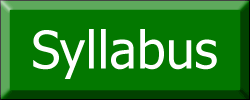CSCI 1320 - Assignment #7/8
Your bag of tricks for programming has now been improved so
that it includes the use of files and hopefully your understanding of pointers
and their usage has been improved as well. These problems will require general
problem solving, but they will integrate parts of file usage in them as well.
They are fairly large in scope so you should certainly get started on them
early. If you have problems let me know. The only way I know if people are
struggling and something needs to be adjusted is if I hear from students.
After each problem description I've given you sample input and
output files. If you run the program with the input I give you should get
something pretty much identical to my output. Make sure to look at these files
and make sure your program will take one as input and produce something very
similar to the other.
As a side note, be sure to save the code from all the programs
you do. It is quite possible that later in the semester other assignments
will include things that overlap with them and your code will be reusable.
To turn in this assignment just send the code in an e-mail to
mlewis@cs.trinity.edu. You can do this with the command "mail mlewis@cs.trinity.edu
< assn4.c" if assn4.c is the name of your source file.
Freeform Problem:
At the request of one of your classmates, this problem is one
that you come up with all on your own. It needs to involve the use of files
as well as other computational resources that we have talked about. You will
need to write an English description of exactly what problem you are solving
at the top of your code. You should probably pass it by me to make sure it
is sufficient for this assignment. That descritpion needs to include not only
the description of the problem you are solving, but also the type of inputs
and outputs. Basically, it needs to be something like my normal assignment
descriptions with enough information that I can determine if your program
actually does it. You also need to provide a sample input file and a sample
output file. If you pick this option I will be less able to help you with
problems because I generally won't know what you are trying to do. The better
the description you provide to me the more likely I'll be to be able to assist
you. The problem you do will need to require a significant amount of code
to be approved. Basically, it needs to be of roughly the same scope as the
other problems on this assignment.
Graphics Problem:
For this problem you will be bringing together components of
the last two graphics assignments to make something a bit different. You are
going to use parts of your raster drawing program to help "render"
a scene in 3-D. You are going to use a very simple rendering model to do it
so that things aren't too complex. A realy rendering model would have things
look smaller as they move away, that is a perspective view. You aren't going
to do that. You'll assume that your lines of sight are parallel which makes
things a lot easier.
What you will build is something a lot like assignment #5, but
now the image will be in 3-D instead of 2-D and you will have some lighting
from assignment #4. In this assignment there are two things that you can add
to what you are drawing, triangles and light sources. You should be able to
handle at least 3 lights and 20 triangles, but you can write your code to
handle more than that if you want. When you start the program, you won't have
any of either. You will have functions that read lights and triangles from
a file as well as a function to write such a file. Your code will also have
the simplePrint and printRaster functions you wrote before. The first one
will still print to screen just so you can see roughly what it looks like.
The second though should write out to file. The user should be prompted for
a file name. Make sure your print raster prints a first line with the width
and height that you use on it. I left that out of my earlier sample output.
I'll be providing you a way that you can view those images in color if you
want to. So the functions in your program are the following
- Add light
- Add triangle
- Read geometry file
- Write geometry file
- Simple print
-
Print raster to file
- Quit
The lights and triangles will have x, y, and z coorodinates. x and y will be
just like they were in the earlier program. z will be distance from the viewer.
When you draw a triangle (you get to figure out how to do this), you will ignore
the z component for where it is on screen. That will only matter for determining
the lighting on it. When the user adds a triangle, that should be drawn on the
raster with the current lights. When a light is added all the triangles will
need to be redrawn so that they use all the lights. Each triangle and light
should also have a color specified for it. To determine the color to draw each
triangle, you will add up the colors it would be for each light. To determine
that, you will use what you did for assignment #4 to get the intensity of the
light. One alteration you should make here is that using the pixels distances
for the 1/r^2 decrease in intensity causes things to be very dark so instead,
take the distance you find and divide it by WIDTH to get a more appropriately
scaled value. If we say that value is frac, then the color from that light will
be a rgb where each component is determined as follows. r_drawn=frac*r_tri*r_light/255.
The reason you divide at the end is because the components aren't between 0
and 1, but between 0 and 255 so to get a value in that same range you multiple
the two and divide by 255.
The only geometric shape you are drawing for this is a triangle. Of course,
any polygon can be built out of triangles. Drawing triangles isn't a simple
task though. My hint to you is that you should figure out where you would draw
lines between the points, then for each row in the raster, fill all the pixels
between those. Then you only have to worry about the math for drawing a straight
line.
The option to read in a geometry file should ask for a file name, clear your
current geometry, then read in a file that has new lights and triangles. The
format of the file has lines that start with an 'L' for a light or a 'T' for
a triangle. You can read a string for that and just examine the first character.
Following that will be either 3 numbers for a light or 9 numbers for a triangle.
After this is called, the raster needs to be cleared and all the new triangles
should be drawn. Note that the reading function will have to check for feof
to know when it is done. Writing a geometry file should ask for a file name
then write the above format to it.
If you want to do this option and you didn't do the graphics
options on assignments #4 or #5, let me know and I can e-mail you code for
those.
To view your rasters graphically download this
file to the directory you are doing your assignment in. To use it you
will need to have a recent version of java installed. The ones on the mab
machines should work well. At the command prompt, type "java -cp RasterViewer.jar
RasterViewer raster.txt". The raster .txt can be replaced with whatever
file name you are using for your output file.
input : output
: orginal format geometry file : geometry
file : raster file : executable
Baby Mathematica:
For this problem you will use your equation parser from assignment
#6 to build a little program that can be used to do some simple function evaluation.
You will then give it the ability to output text files that are plots of your
functions and can be plotted up using gnuplot. You should also give it the
ability to read files that have functions defined in them.
You can define 3 functions: f, g, and h. They are all functions
of a single variable x. They are definied in terms of numbers, x, and the
other functions. You only have to have the four basic operators (+, -, *,
/), but you can add extra ones if you want extra credit. If you do this, there
needs to be a big comment at the top of the code telling me what you did so
I can try it and give you the extra credit.
Options:
- Define functions. (define)
- Evaluate a function at a point. (evaluate)
- View functions (view)
- Read a file with function definitions. (read)
- Write the current definitions to file. (write)
- Plot a function and output the points to a file. (plot)
- Quit (quit)
This program won't use a numeric menu. Instead, it will be more command line
like, similar to what we wrote in class for the text editor. You can read in
a string for the command and check the first character to see what they picked.
Use the strings shown above after each option. See the sample input file for
an idea of how this would work.
The define option lets the user define a function. The format for that should
look something like this "define f=x*x" or "def g=f(x-1)+2".
After the keyword (beginning with 'd') you have the function letter ('f', 'g',
or 'h'), followed by an equals sign and the string for the function. I recommend
that you store the functions in an array of 3 strings.
The evaluate option allows the user to evalutate one of the functions at a
particular value. So they could type in something like "evaluate f(4)"
or "eval h(5+3)". To get this to work, you will add a bit to your
parse function from assignment #6. Earlier it needed three arguments, a string
for the equation and two ints for start and end. You will need to add two more
arguments to that. The first is a double for the value of x. The second is a
2D array of chars that holds the three strings defining f, g, and h. You need
that because the functions can call other functions. The second example in this
paragraph and the second one in the define paragraph might scare you a bit,
but don't let them. Instead think about the power of your parse function and
how you can use that to make evaluating those expressions easier.
In addition to adding the two extra arguments to parse, you will also add some
extra possible cases in the function. Where you earlier just called atof, now
you will need to check for 3 possibilities and all can be easily distinguished
by the value of str[start] (or whatever name you use for the string argument.
If it is an 'x' then you need to return the value that was passed in for x.
If it begins with an f, g, or h, you need to parse the argument and then use
that as the x value for a call to parse on the proper function definition string.
The view option just prints out the formulas that have been entered in case
you forget them.
The read and write options are fairly straight forward. You need to write some
code that will read in definitions for your three functions from a file or write
out to it. In both cases, the use needs to specify a file name. For example
"read forms.txt" or "w cooleqs.txt". You can choose your
own format for this as long as it works for reading and writing when you don't
have all of them defined. Consider that using something close to what I have
asked you to do for define might be helpful because you could call a single
function for define and for the read function.
The last option is to plot. You aren't going to write the graphics code, but
you will write a file that has x and y values in it so that it can be plotted
with gnuplot. See the description of the physics problem in assignment
#5 for information on that. For this to work, they need to specify which
function, a minimum x, a maximum x, and a file name. Your code should evaluate
the function at 100 evenly spaced points between the min and max and write 100
lines where each has the x value followed by the y value on it. For example,
they might give the command "plot f(x) 2.3 6.7 funcPlot.txt".
If you choose this option you might want to look at the strcmp and strcpy functions
in string.h using the man pages or your text. You can certainly write those
functions yourself, but calling those will make your code shorter.
Just as a side note, I think this might be the most exciting problem of all
the ones I've given so far this year (for me). It can really show you the power
of a simple recursive algorithm and once it is done, you will have written a
program that is far more powerful than what most people in a PAD1 class would
even dream of doing. That doesn't mean it is harder though, just more powerful.
If you want to do this option and you didn't do the symbolic algebra
options on assignment #5, let me know and I can e-mail you code for it, mainly
the parse function.
input file : output
file : function file : plot
file : plot2 file : executable
Grade Book:
For this option you will write a program that I could use to keep track of
grades for the class. It needs to give me the following abilities:
-
Add student names
- Enter a grade for everyone in the class for an assignment, quiz, test, or
class participation
- Enter a single grade for one student
- Prints grades and average for one student
- Print class average and standard deviation for any grade
- Write gradebook to a file
- Read gradebook from a file
- Quit
The way that you should do this is to keep 2D arrays with all the names and
grades. You can decide exactly how you want to do this. It could be done with
one big array for all grades or separate arrays for assignment, quizzes, tests,
and class participation. Whatever you choose, the whole program needs to work
that way. Grade values that are negative imply that a grade has not yet been
entered for that and it should be ignored in the calculation of averages.
The first option will add a new student to the class. It asks for the students
name. You can assume that the names given won't have spaces in them. Your program
doesn't have to handle more than 30 students and names can't be more than 40
characters long. After the name is entered you should set all the grades for
that student to -1.
For the second option, the user specifies which grade they are giving values
for (ex. "a 2" or "q 3", you can read in the a, t, q, or
c as a string and only look at the first character of that string). It will
then print the name of each student in the class and wait for the user to input
that student's grade. A -1 can be input to say that that students grade hasn't
been determined yet.
In the third option the user is prompted both for what grade and who to give
it to. If the name entered isn't in the class an error message should be given.
You can use strcmp or write your own function to compare the strings to figure
out the index of a given student. Once the student has been found the user can
input a grade for them.
The fourth option also has to get a specific student name and find that student.
It then prints all the assignment grades and their average, the quiz grades
and their average (with the smallest valid grade dropped, be careful here),
the tests and their average, the class participation, and the final average
for the class. Fields that are negative should not be factored into the averages
at all.
For the fifth option the user tell you what grade they are interested in and
the program gives the class average and standard deviation for that one. The
standard deviation is the square root of the sum of the squares of the difference
between each grade and the average.
The sixth and seventh options simply write out the entire grade book to a specified
file or load on in from there. This way I could entere some grades, write it
to disk, then quite and when I come back later I could load it back in and start
adding more grades. How you choose to write this file is up to you, it just
has to work.
input file : output
file : gradebook : executable





